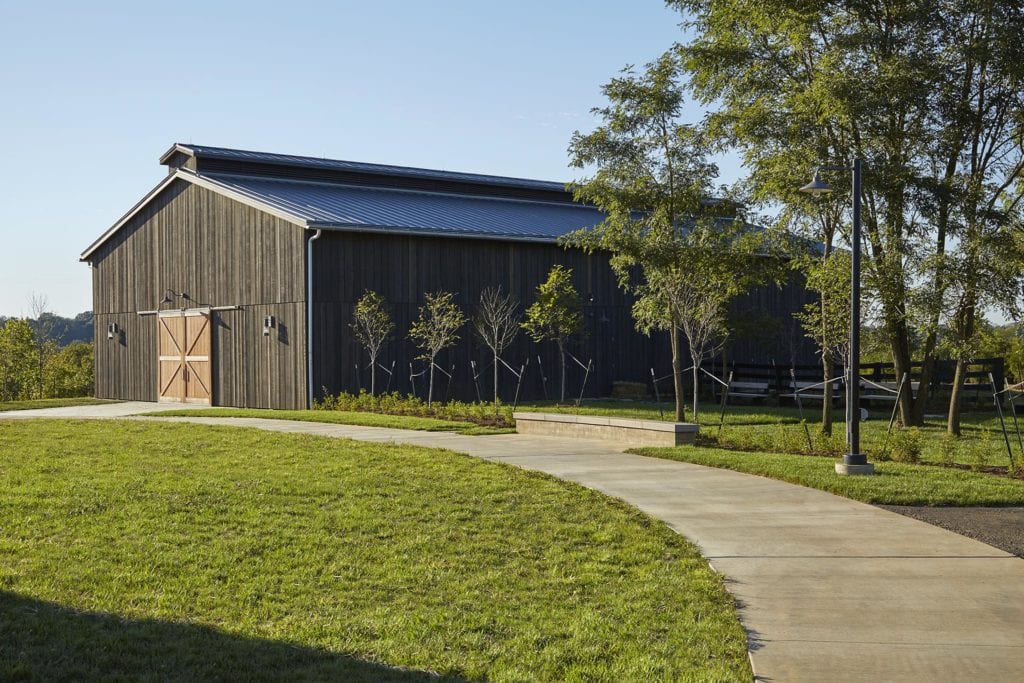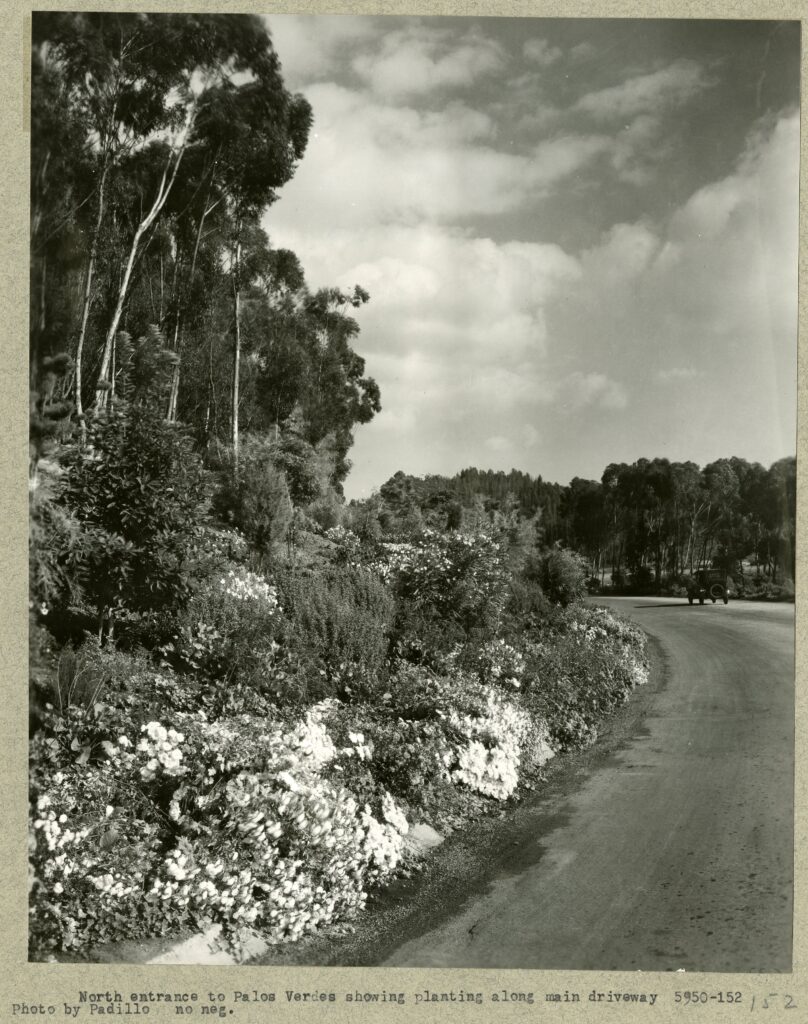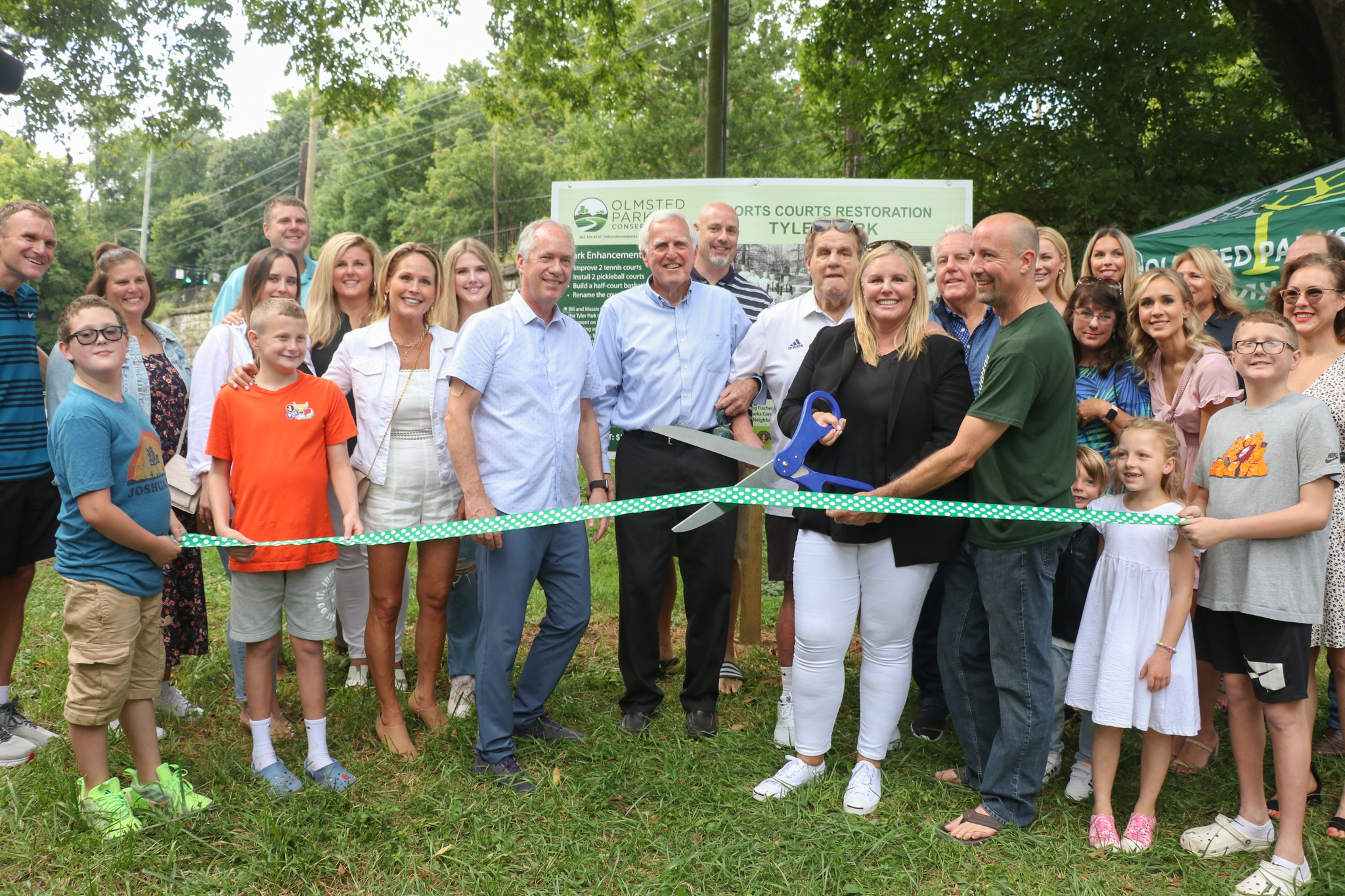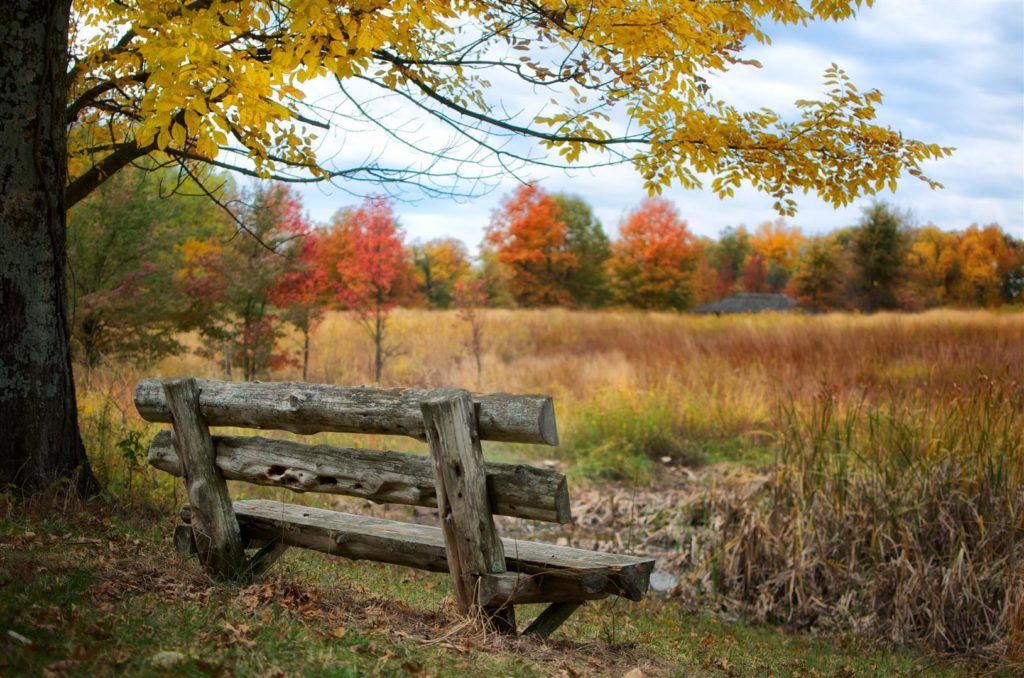
A light breeze, the first splash of tree canopy green and a forest floor dotted with spring’s early wildflowers, it was a perfect afternoon for my walk with Dan Jones, one of the country’s great 21st-century park thinkers and makers. Dan is the visionary behind The Parklands of Floyds Fork, an Olmsted-inspired four-park system on the eastern edge of Louisville, KY. This 4,000-acre landscape is shaping the future growth of a dynamic American city in the way that Louisville’s Olmsted park and parkway system shaped that city’s development in the early 20th century.
Dan received his Ph.D. in American History from Indiana University with a focus on land planning in the West. An eclectic and wide-ranging reader and thinker, Dan opted against an academic career and returned to Louisville to work in real estate development after a stint in New York City and Utah. With a vision of a 21st-century park system in metro-Louisville’s outer ring, he went back to school and received his masters’ degree in Forestry from Yale. Always a student and scholar of both the natural and cultural history of a place, Dan now teaches a college course on the interface of these forces and the interpretation of nature as a culture, a hall-mark of the understanding of Floyds Fork.
The following is an excerpt from our conversation as we walked a favorite Cherokee Park loop.
LUCY: Dan, were you born in Louisville? And, if so, at what point in your youth did you discover Cherokee Park?
DAN: Yes, I was born in Louisville, and both of my parents are Louisville natives. My first memories of the park are of my mother taking me and my siblings — [was one of five] — to hunt for crayfish in Cherokee Park streams, followed by a walk that inevitably led to the Big Rock — a magic place for a child to climb and explore. I knew Cherokee Park first, but as I grew up, I lived at different locations in the city and only then understood we had a unique parks system.
LUCY: When did you learn about the Olmsted firm’s legacy in Louisville?
DAN: In my senior year of college, I had an environmental history course with Bill Cronon [author of Changes in the Land: Indians, Colonists, and the Ecology of New England], who lectured on Olmsted. After college, I came back to Louisville and rediscovered the work of the Olmsted firm in Louisville—Cherokee, Iroquois, Chickasaw,Shawnee Parks and other small parks, parkways and planned communities made up this fantastic system. I saw this work through a new lens. Before that, I was just a user of the parks, and now I saw essential connections. I also lived in NYC for a short time when I was first out of college and got to know Central Park and was influenced by Betsy Barlow Rogers, who was just getting the Central Park Conservancy started. I then moved to Utah and then Indiana for my Ph.D. in environmental history and the American West’s History. When I returned to Louisville, I went into real estate development.
As part of what I was doing, my dad, David Jones, and I saw an opportunity and built Thurman Hutchins Park, which we donated to the city. It wasn’t long after that success, Bill Juckett, long-time Olmsted Parks Conservancy board member and then director, and Bridget Sullivan, director of Louisville Metro Parks, came to meet with us. The life-changing question they asked of us was “What could our generation do that would have the same impact as the Olmsted firm in Louisville?” I mulled over the question for some time and the simple answer was, we could do the same thing: we could plan and develop Louisville’s next system of parks.
As a developer, I could see the need to get ahead of the city’s growth and set aside a relatively undisturbed landscape and not do a single park but build a systemic, world-class addition to Louisville’s unique Olmsted legacy.
LUCY: This is quite a revelation; how did you start to make this dream a reality?
DAN: I hired local planner Dan Church to do the initial land planning. We knew that Floyds Fork, which is along the eastern third of the city, was one of the last places where a world-class park system would be possible. Before deciding, however, we looked at other sites around the city but chose to focus on this area because of Floyds Fork. Much like Olmsted’s ability to see the unique qualities inherent in Cherokee, Iroquois and Shawnee landscapes, we saw the underlying natural resource: the foundation on which to build a world-class park system.
After 75 separate real estate transactions — with no condemnation — we acquired the land necessary to complement an existing land trust, two city-owned parcels developed as parks, and a land conservation tract, all parts of The Parklands of Floyds Fork. In a remarkably short time — five years — we put together a 4,000-acre tract of land to create a forever open system of parks: protected in perpetuity with free public access 365 days of the year.
LUCY: After the acquisition, what was your vision for the Parklands?
DAN: A key piece of our thinking was creating a single park master plan that would run with the deed and that 21st Century Parks, Inc. controls.
LUCY: Were any of the things you worked on informed by the Olmsted firm’s work in Louisville?
DAN: Yes, in my reading and experience, park master plans get abused and we wanted to protect the Floyds Fork plan. In 2004, I went to Yale School of Forestry & Environmental Studies to get the project going, and I came home in 2006 with one employee to shepherd the process. We successfully raised $130 million, bought the land, and started the master planning in 2008. Construction began in 2011. The Parklands was constructed in five and a half years from a single master plan.
LUCY: Wow, planned, built and opened? That is a remarkable achievement. Is this the first phase?
DAN: That’s a great question. If we could never build another thing, we would consider the park system complete, but sure, there are other things that we would like to build. The next big task is getting the 21st Century Parks board to raise the annual operating budget of $4.5 million. At this point, we receive zero tax dollars to operate. Something else we learned as we moved through the initial development process was that the 2008 WRT master plan was the “big picture” in the master-planning phase. To build out the initial Olmstedian vision, we needed more detail.
LUCY: Who would you say helped shape the Olmsted vision for the Parklands?
DAN: There were important guiding lights: One was Susan Rademacher, long-time director of Louisville’s Olmsted Park Conservancy, who is now in Pittsburgh working with their legacy of parks. She gave us the Olmsted vision of how we could be park planners and place-makers in the Olmsted tradition. In the initial stages, the city envisioned our work as a greenway and not as a park system, which led to some early frustration. Greenways are great things, but they are not a park system, and we wanted to build an Olmsted-inspired park system. The Olmsted firm’s legacy in Louisville was about advocating for a continuous and connecting park system, focusing on people in nature in a very intentional way. A people thread and a nature thread that are balanced and interwoven. Another critical insight for our work came from the planners with WRT. On a purely natural landscape level, they told us that Floyds Fork would never rival a landscape like Yosemite, but as a public park landscape, Floyds Fork, as envisioned, could compete with any park system in the world. If the city uses this 21st-century park system to grow thoughtfully, Louisville’s citizens won’t know where the city ends and the park begins–an interwoven balance of people in nature.
LUCY: What came next?
DAN: As we got to the construction-detailing phase of work, we looked to a local architect, Jim Walters, who consulted on many restoration and rehabilitation plans for Louisville’s Olmsted parks. He had experience with design work details, which we needed as we moved from master plan to construction plans. We finished the construction work by the fall of 2016, and by the end of 2017, The Parklands of Floyds Fork was already getting 3 million visitors a year–a busy urban edge.
Now that we are up and running, we understand and acknowledge that four-thousand acres won’t solve the challenges of how a city like Louisville grows to meet and absorb a new park system in this century. I keep telling everyone who will listen that having had the foresight to set aside and develop a world-class system of parks on Louisville’s outer edge allows Louisville to do something that cities who have not had the same foresight can never do. Atlanta is so proud of its Beltline, but that is a retrofit. It’s a linear bit of nature established along an abandoned rail line that ringed the city. Louisville’s government and citizens have the chance to direct growth and planning with two iterations of world-class park systems that are unparalleled. Without The Parklands of Floyds Fork, Louisville would be fighting a denatured urban edge like every other city struggling to retrofit nature in left-over spaces.
The Parklands of Floyds Fork lets Louisville get ahead of the development coming: a city-shaping green infrastructure. It is the largest fully-funded new metropolitan park in the country and captures the most extensive undeveloped land in a metro area — in the Olmsted vision — the park will shape future development. It is a singular opportunity to grow the city around this new system of parks the way that NYC grew around Central Park, and Louisville — Olmsted’s last great park system—grew around its first system of parks and parkways.
LUCY: Louisville is a combined city-county government, right? To what degree is 21st-century Parks helping to shape the growth that is coming the park’s way?
DAN: This is our great challenge — I’ve learned that land development is a contact sport and that it will take vigilance — we want the 21st-century version of what the Olmsted legacy of parks and parkways did to help shape Louisville’s 20th-century growth. We want The Parklands to be the shaping force as development comes our way. Development without greenspace creates soulless cities, but greenspace without well-conceived neighborhoods and people to use them are equally problematic. Our staff is re-examining how suburbs faced or turned away from connecting streets and we are trying to figure out the best way to make 21st-century connections with the existing Louisville metro street infrastructure. We want a resilient solution, and we want to help articulate that in the city’s strategic and long-term planning documents.
We need to bring people out of their corners and work together to shape Louisville’s growth trajectory. The city controls infrastructure, so the city planners need to recognize their role and think about how their work will interface with the park. If we want a connecting parkway to The Parklands, that route needs to work out now.
Parks are essential infrastructure, whereas modes of transportation will change. Parkland set aside in perpetuity is our enduring legacy. The Parklands are focused on visitor experience, and we work to ensure that our 4,000 acres are open to everyone for free, 365 days a year. In the end, we want to ensure that the visitor experience is safe, clean, fun and beautiful!
Lucy Lawliss is a board member of the National Association for Olmsted Parks.











